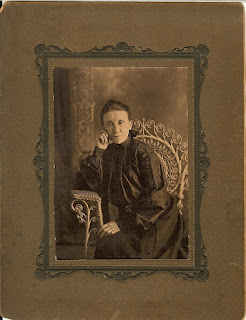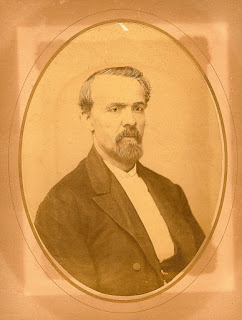Mill Shoals

Aerial View of Mill Shoals
Mill Shoals - This village is situated on sections 19 and 20, on the banks of Skillet Fork. The land is very level, and was originally owned by William Linder. The village was laid out in 1869 by Judge Boggs, of Wayne County, who received one half of forty acres for the work. There is now a population of about 275 persons. There is a flouring mill, owned by Samuel Burrell, and run by water-power; a saw-mill, owned by the Behymer Co., doing a large business; a lumber manufactory, where lumber is prepared for the market; two general stores - Behymer & Co. and Upton & Laster; two groceries, one hotel, two doctors, and a good school, taught by B.F. Files. [History of White County, Illinois, Together with Sketches of Its Cities, Villages & Townships, Educational, Religious, Civil, Military & Political History, 1883]
According to Loren Taylor & Stephanie Bare in their History of Mill Shoals Nathaniel Behymer purchased Wakefield's sawmill to set up Behymer Company described above. "By this time, Behymer and Company was shipping lumber by barge on the Skillet Fork River to points on the Ohio and Mississippi rivers as well as towns and budding cities in the interior by railroad. He shipped lumber to Springfield for the construction of the State Capitol. Jack Behymer was the head sawyer at the mill. His oldest brother Nathaniel, owned the lumber company, a general store, several houses in Mill Shoals, and over three hundred acres of land. Thomas Behymer owned and operated a hotel at this same time."
In 1895, the stave mill was bought by Johangten and Jack Poorman, who came to Mill Shoals from Van Wert, Ohio. They changed the name to Mill Shoals Cooperage Company and moved it from its original site to a point south of the road that leads to the river bridge (Linder Street). From 1904 to 1910, the company furnished electricity to the citizens of Mill Shoals for electric lights. Although they charged a small fee, many residents did not subscribe. Thus, Mill Shoals was one of the first villages in southern Illinois to have electric lights.
In 1910, the company moved to Sikeston, Missouri, at which time began the slow decline of Mill Shoals. When the stave mill came to Mill Shoals, the population was between 275 and 300; when it left in 1910, the population has been estimated to be about 1500.
A.M. Scudder was one of the early postmasters. He was followed by Billy Files, who served for many years, followed by Belle Fleeman and then D.L. Newby. Sam Simpson was the next postmaster, and when he resigned Ernest Gwaltney became postmaster. Lowell Quindry served as postmaster from about 1947 to 1954. Robert Wheeler then served from 1954 to 1980. Earl King replaced Bob Wheeler in 1980.
Beginning about 1896, hotels and boarding houses sprang up to care for the traveling "drummers," transient workers and visitors to Mill Shoals. Boarding houses were scattered along the Skillet Fork from Mill Shoals to north of Wayne City to care for the timber workers that fed the stave and sawmills. In Mill Shoals, there was the Jackson Hotel, Behymer Hotel and the hotel run by Charlie Kennan.
Arthur Roddmen and his sons, John, Dave and Bill, built the grain elevator in 1905. They sold out to the Gale Brothers, who in turn sold the elevator to C.A. French & Son in 1916. The French Elevator business got its start in 1888 when "Polk" French owned elevators at Belmont and Mt. Carmel. When C.A. French died in 1941, the business passed on to his son, Hershel, who, with his sons Charles and Glen, expanded and improved the Mill Shoals facility. As other businesses declined, the elevator prospered as farming became the number one industry around the Mill Shoals community. The Frenches owned elevators at Enfield, Springerton and Golden Gate.
Charlie Funkhouser bought and sold grain in Mill Shoals for a few years; then he and Sam Funkhouser bought the general store in the IOOF building at the corner of Linder and East streets. Charlie sold out to Sam and moved to Sikeston, Missouri for awhile. He moved back in 1920, bought the store back from Sam, and operated it until his retirement.
Revised 6/15/2019


Comments
Post a Comment